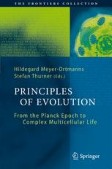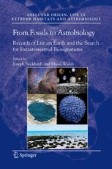Search
Search Results
-
Active Brownian particles
We review theoretical models of individual motility as well as collective dynamics and pattern formation of active particles. We focus on simple...
-
HOPE Hardware
Building a crew vehicle to transport six astronauts on an interplanetary trajectory to Callisto will be no easy task. Designing the spacecraft -...
-
Introduction
This introductory section serves as a summary of overarching concepts, universal features, recurrent puzzles, a common language, and striking...
-
Introduction to Space Life Sciences
This first chapter describes the hazards that the space environment poses to humans, and how spaceflight affects the human body (where we are). We...
-
Nanoscale X-ray imaging
Recent years have seen significant progress in the field of soft- and hard-X-ray microscopy, both technically, through developments in source, optics...

-
In Situ Biological Contamination Studies of the Moon: Implications for Planetary Protection and Life Detection Missions
NASA and ESA have outlined visions for solar system exploration that will include a series of lunar robotic precursor missions to prepare for, and...
-
Mission Objectives
A human mission to Callisto will represent the most risky and ambitious space mission ever conceived. The complexities of such an endeavor are...
-
How the UK Can Lead the Terrestrial Translation of Biomedical Advances Arising from Lunar Exploration Activities
Terrestrial translation of biomedical advances is insufficient justification for lunar exploration. However, terrestrial translation should be viewed...
-
Atmospheric aerosol fungi concentration and diversity in the South of Western Siberia
The results of the two-year observation of the atmospheric aerosol fungi concentration and diversity in the south of Western Siberia are presented....
-
The use of modern UV radiation sources for the utilization of persistent toxic substances
The influence of KrCl excilamp UV radiation (7n r = 222 nm) on the biodegradation of polycyclic aromatic hydrocarbons (PAHs: anthracene, phenanthrene,...
-
Biological issues
The survival of living things in space and on extraterrestrial bodies was and is the key challenge to a spacefaring humanity. The first priority is...
-
Fossil Microorganisms at Methane Seeps: An Astrobiological Perspective
The recent detection of methane in the martian atmosphere has stimulated a debate on its source, including speculations on a possible biological...
-
Evaluation of the properties of cemented radioactive wastes with prolonged testing in mound type repository
Cemented wastes to be stored for a long time are investigated using physicochemical and microbiological methods of analysis. It is determined that...
-
Population Dynamics
Populations—whether of organisms, cells, or viruses—are of central importance in biology. In this chapter we consider some of the basic models of...
-
Introduction
Half a century has passed since humans began the conquest of space. Satellites, lunar landings, space stations, robot rovers on Mars, solar and deep...
-
Catalogue of Minor Planet Names and Discovery Circumstances
Discovered 1801 Jan. 1 by G. Piazzi at Palermo. (* MC 3, 604) Named after the Roman goddess of corn and harvests, daughter of Rhea {see planet (577)}...
-

-

-
Morphological Biosignatures in Early Terrestrial and Extraterrestrial Materials
Biosignatures in early terrestrial rocks are highly relevant in the search for traces of life on Mars because the early geological environments of...
-
Morphological Biosignatures in Early Terrestrial and Extraterrestrial Materials
Biosignatures in early terrestrial rocks are highly relevant in the search for traces of life on Mars because the early geological environments of...
